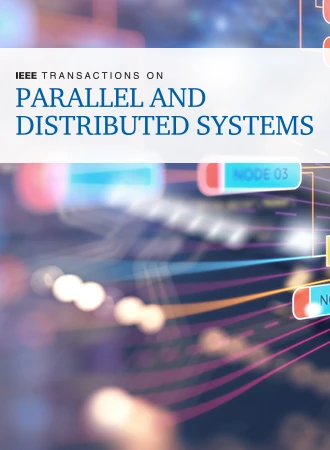PROV-IO$^+$+: A Cross-Platform Provenance Framework for Scientific Data on HPC Systems
IF 5.6
2区 计算机科学
Q1 COMPUTER SCIENCE, THEORY & METHODS
IEEE Transactions on Parallel and Distributed Systems
Pub Date : 2024-03-14
DOI:10.1109/TPDS.2024.3374555
引用次数: 0
Abstract
Data provenance, or data lineage, describes the life cycle of data. In scientific workflows on HPC systems, scientists often seek diverse provenance (e.g., origins of data products, usage patterns of datasets). Unfortunately, existing provenance solutions cannot address the challenges due to their incompatible provenance models and/or system implementations. In this paper, we analyze four representative scientific workflows in collaboration with the domain scientists to identify concrete provenance needs. Based on the first-hand analysis, we propose a provenance framework called PROV-IOPROV-IO$^+$:高性能计算系统上科学数据的跨平台证明框架
数据出处(或称数据脉络)描述了数据的生命周期。在高性能计算系统上的科学工作流中,科学家经常会寻求各种出处(例如,数据产品的来源、数据集的使用模式)。遗憾的是,由于不兼容的出处模型和/或系统实现,现有的出处解决方案无法应对这些挑战。在本文中,我们与领域科学家合作分析了四个具有代表性的科学工作流,以确定具体的出处需求。在第一手分析的基础上,我们提出了一个名为 PROV-IO$^+$ 的出处框架,其中包括一个以 I/O 为中心的出处模型,用于精确描述科学数据以及相关的 I/O 操作和环境。此外,我们还构建了 PROV-IO$^+$ 的原型,以便在实际的高性能计算系统上实现端到端的出处支持,而无需太多的人工操作。PROV-IO$^+$框架可以在不同的高性能计算平台上支持容器化和非容器化工作流,并能灵活选择不同类别的出处。我们对现实工作流的实验表明,PROV-IO$^+$ 能以合理的性能有效满足领域科学家的出处需求(例如,大多数实验的跟踪开销低于 3.5%)。此外,在我们的实验中,PROV-IO$^+$ 的性能优于最先进的系统(即 ProvLake)。
本文章由计算机程序翻译,如有差异,请以英文原文为准。
求助全文
约1分钟内获得全文
求助全文
来源期刊

IEEE Transactions on Parallel and Distributed Systems
工程技术-工程:电子与电气
CiteScore
11.00
自引率
9.40%
发文量
281
审稿时长
5.6 months
期刊介绍:
IEEE Transactions on Parallel and Distributed Systems (TPDS) is published monthly. It publishes a range of papers, comments on previously published papers, and survey articles that deal with the parallel and distributed systems research areas of current importance to our readers. Particular areas of interest include, but are not limited to:
a) Parallel and distributed algorithms, focusing on topics such as: models of computation; numerical, combinatorial, and data-intensive parallel algorithms, scalability of algorithms and data structures for parallel and distributed systems, communication and synchronization protocols, network algorithms, scheduling, and load balancing.
b) Applications of parallel and distributed computing, including computational and data-enabled science and engineering, big data applications, parallel crowd sourcing, large-scale social network analysis, management of big data, cloud and grid computing, scientific and biomedical applications, mobile computing, and cyber-physical systems.
c) Parallel and distributed architectures, including architectures for instruction-level and thread-level parallelism; design, analysis, implementation, fault resilience and performance measurements of multiple-processor systems; multicore processors, heterogeneous many-core systems; petascale and exascale systems designs; novel big data architectures; special purpose architectures, including graphics processors, signal processors, network processors, media accelerators, and other special purpose processors and accelerators; impact of technology on architecture; network and interconnect architectures; parallel I/O and storage systems; architecture of the memory hierarchy; power-efficient and green computing architectures; dependable architectures; and performance modeling and evaluation.
d) Parallel and distributed software, including parallel and multicore programming languages and compilers, runtime systems, operating systems, Internet computing and web services, resource management including green computing, middleware for grids, clouds, and data centers, libraries, performance modeling and evaluation, parallel programming paradigms, and programming environments and tools.
 求助内容:
求助内容: 应助结果提醒方式:
应助结果提醒方式:


